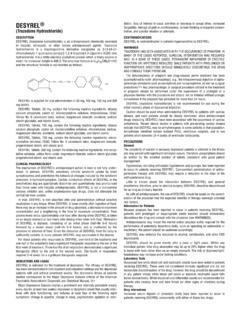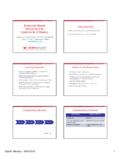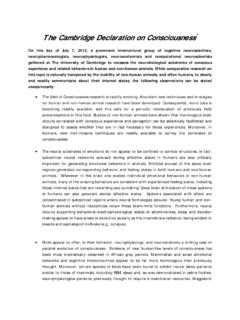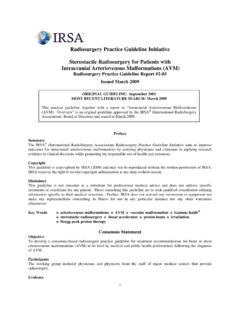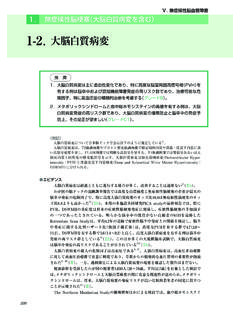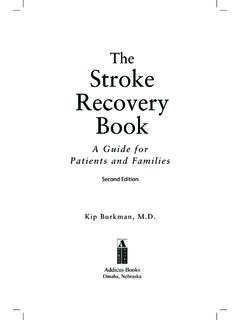Transcription of Fluphenazine Decanoate Injection, USP Package …
1 Fluphenazine Decanoate injection , USPF luphenazine Decanoate injection , USPF luphenazine Decanoate injection , USPF luphenazine Decanoate injection , USPPACKAGE INSERTFLUPHENAZINE Decanoate injection , USP25 mg/mLRx OnlyDESCRIPTIONF luphenazine Decanoate is the Decanoate ester of a trifluoromethylphenothiazine derivative. Fluphenazine Decanoate is 2-4-[3-(2-trifluoromethylphenothiazin-10 -yl)-propyl]-piperazin-1-yl]ethyl decan-oate. It is a highly potent behavior modifier with a markedly extendedduration of effect. Fluphenazine Decanoate injection is a sterilesolution available for intramuscular or subcutaneous administration,providing 25 mg Fluphenazine Decanoate per mL in a sesame oilvehicle with (w/v) benzyl alcohol as a Decanoate has the following structural formula:SNCF3(CH2)3 NNOCOCH2CH2(CH2) PHARMACOLOGYThe basic effects of Fluphenazine Decanoate appear to be nodifferent from those of Fluphenazine hydrochloride, with the exceptionof duration of action.
2 The esterification of Fluphenazine markedlyprolongs the drug s duration of effect without unduly attenuating itsbeneficial Decanoate has activity at all levels of the centralnervous system as well as on multiple organ systems. Themechanism whereby its therapeutic action is exerted is differs from other phenothiazine derivatives in severalrespects: it is more potent on a milligram basis, it has lesspotentiating effect on central nervous system depressants andanesthetics than do some of the phenothiazines and appears to beless sedating, and it is less likely than some of the olderphenothiazines to produce hypotension (nevertheless, appropriatecautions should be observed see sections on PRECAUTIONS andADVERSE REACTIONS).
3 INDICATIONS AND USAGEF luphenazine Decanoate injection is a long-acting parenteralantipsychotic drug intended for use in the management of patientsrequiring prolonged parenteral neuroleptic therapy ( , chronicschizophrenics). Fluphenazine Decanoate injection has not been shown effective inthe management of behavioral complications in patients with are contraindicated in patients with suspected orestablished subcortical brain compounds should not be used in patients receivinglarge doses of Decanoate injection is contraindicated in comatose orseverely depressed presence of blood dyscrasia or liver damage precludes the useof Fluphenazine Decanoate injection is not intended for use in pediatricpatients under 12 years of Decanoate injection is contraindicated in patients
4 Whohave shown hypersensitivity to Fluphenazine ; cross-sensitivity tophenothiazine derivatives may Dyskinesia:Tardive dyskinesia, a syndrome consisting of potentially irreversible,involuntary, dyskinetic movements may develop in patients treatedwith neuroleptic (antipsychotic) drugs. Although the prevalence ofthe syndrome appears to be highest among the elderly, especiallyelderly women, it is impossible to rely upon prevalence estimates topredict, at the inception of neuroleptic treatment, which patients arelikely to develop the syndrome. Whether neuroleptic drug productsdiffer in their potential to cause tardive dyskinesia is the risk of developing the syndrome and the likelihood that itwill become irreversible are believed to increase as the duration oftreatment and the total cumulative dose of neuroleptic drugsadministered to the patient increase.
5 However, the syndrome candevelop, although much less commonly, after relatively brieftreatment periods at low is no known treatment for established cases of tardivedyskinesia, although the syndrome may remit, partially orcompletely, if neuroleptic treatment is withdrawn. Neuroleptictreatment, itself, however, may suppress (or partially suppress) thesigns and symptoms of the syndrome and thereby may possiblymask the underlying disease process. The effect that symptomaticsuppression has upon the long-term course of the syndrome these considerations, neuroleptics should be prescribed in amanner that is most likely to minimize the occurrence of tardivedyskinesia.
6 Chronic neuroleptic treatment should generally bereserved for patients who suffer from a chronic illness that, 1) isknown to respond to neuroleptic drugs, and, 2) for whom alternative,equally effective, but potentially less harmful treatments are notavailable or appropriate. In patients who do require chronictreatment, the smallest dose and the shortest duration of treatmentproducing a satisfactory clinical response should be sought. Theneed for continued treatment should be reassessed signs and symptoms of tardive dyskinesia appear in a patient onneuroleptics, drug discontinuation should be considered.
7 However,some patients may require treatment despite the presence of thesyndrome.(For further information about the description of tardive dyskinesiaand its clinical detection, please refer to the sections onPRECAUTIONS, Information for Patients and ADVERSEREACTIONS, Tardive Dyskinesia.)Neuroleptic Malignant Syndrome (NMS):A potentially fatal symptom complex sometimes referred to asNeuroleptic Malignant Syndrome (NMS) has been reported inassociation with antipsychotic drugs. Clinical manifestations of NMSare hyperpyrexia, muscle rigidity, altered mental status and evidenceof autonomic instability (irregular pulse or blood pressure,tachycardia, diaphoresis, and cardiac dysrhythmias).
8 The diagnostic evaluation of patients with this syndrome iscomplicated. In arriving at a diagnosis, it is important to identifycases where the clinical presentation includes both serious medicalillness ( , pneumonia, systemic infection, etc.) and untreated orinadequately treated extrapyramidal signs and symptoms (EPS).Other important considerations in the differential diagnosis includecentral anticholinergic toxicity, heat stroke, drug fever and primarycentral nervous system (CNS) management of NMS should include 1) immediatediscontinuation of antipsychotic drugs and other drugs not essentialto concurrent therapy, 2) intensive symptomatic treatment andmedical monitoring, and 3) treatment of any concomitant seriousmedical problems for which specific treatments are available.
9 Thereis no general agreement about specific pharmacological treatmentregimens for uncomplicated a patient requires antipsychotic drug treatment after recovery fromNMS, the potential reintroduction of drug therapy should be carefullyconsidered. The patient should be carefully monitored, sincerecurrences of NMS have been use of this drug may impair the mental and physical abilitiesrequired for driving a car or operating heavy should be alert to the possibility that severe adversereactions may occur which require immediate medical of the effects of alcohol may occur with the use of there is no adequate experience in pediatric patients who havereceived this drug, safety and efficacy in pediatric patients have notbeen in Pregnancy.
10 The safety for the use of this drug during pregnancy has not beenestablished; therefore, the possible hazards should be weighedagainst the potential benefits when administering this drug topregnant :Because of the possibility of cross-sensitivity, fluphenazinedecanoate should be used cautiously in patients who havedeveloped cholestatic jaundice, dermatoses, or other allergicreactions to phenothiazine patients on large doses of a phenothiazine drug who areundergoing surgery should be watched carefully for possiblehypotensive phenomena.

